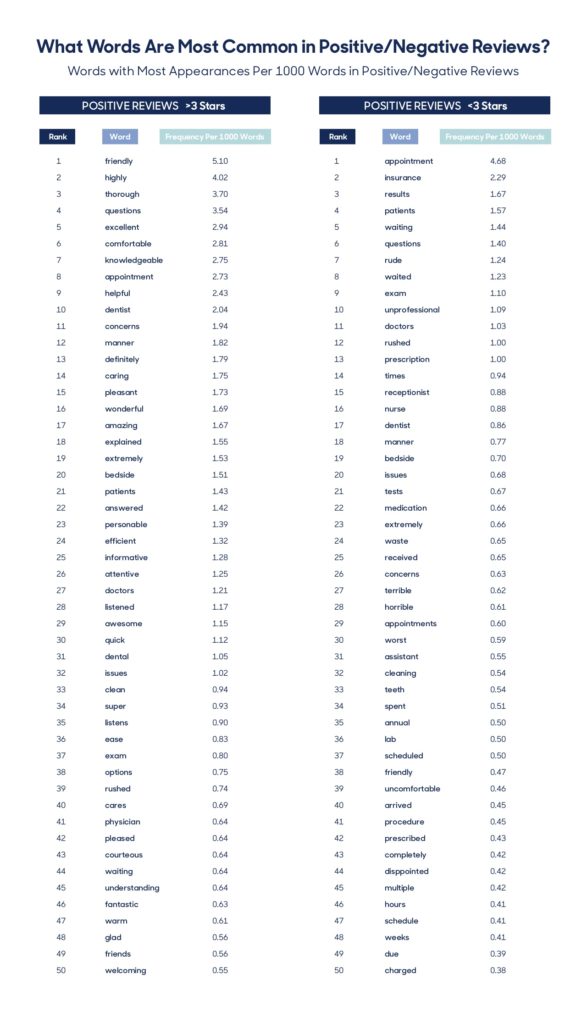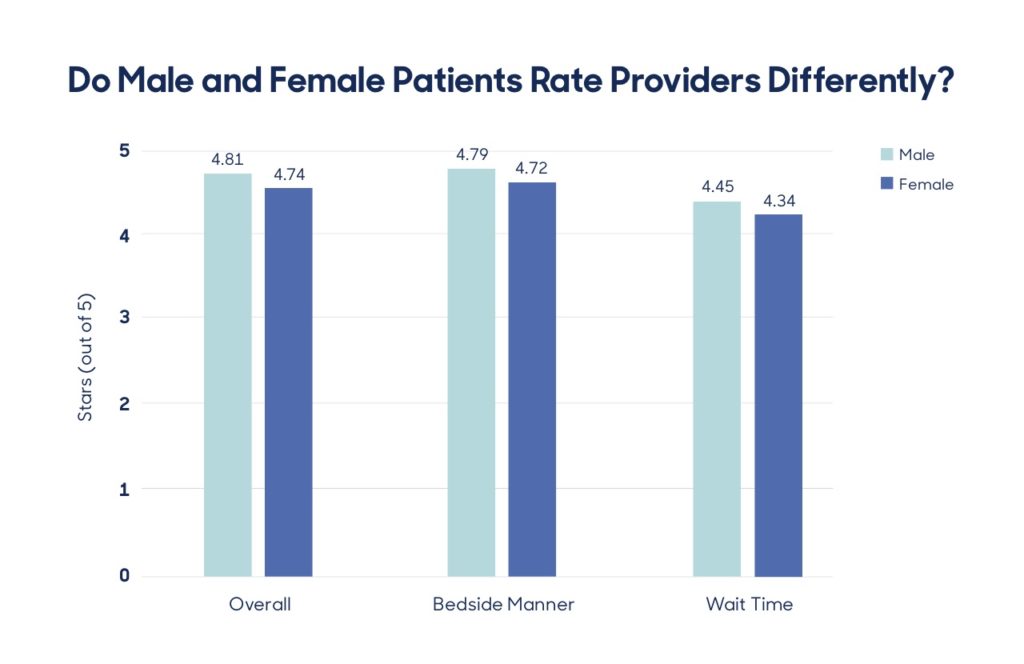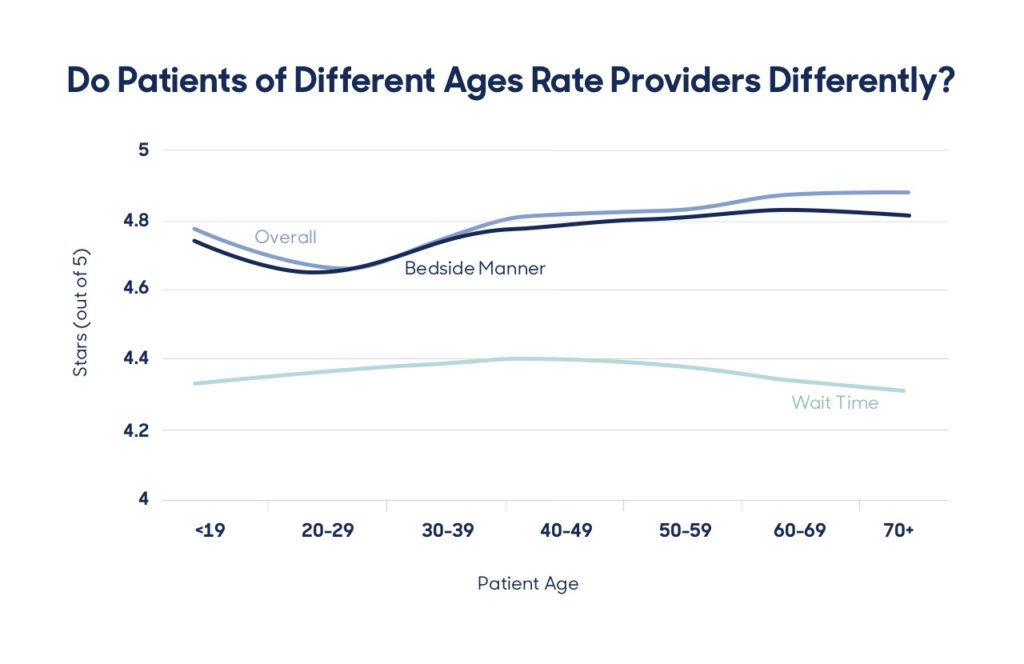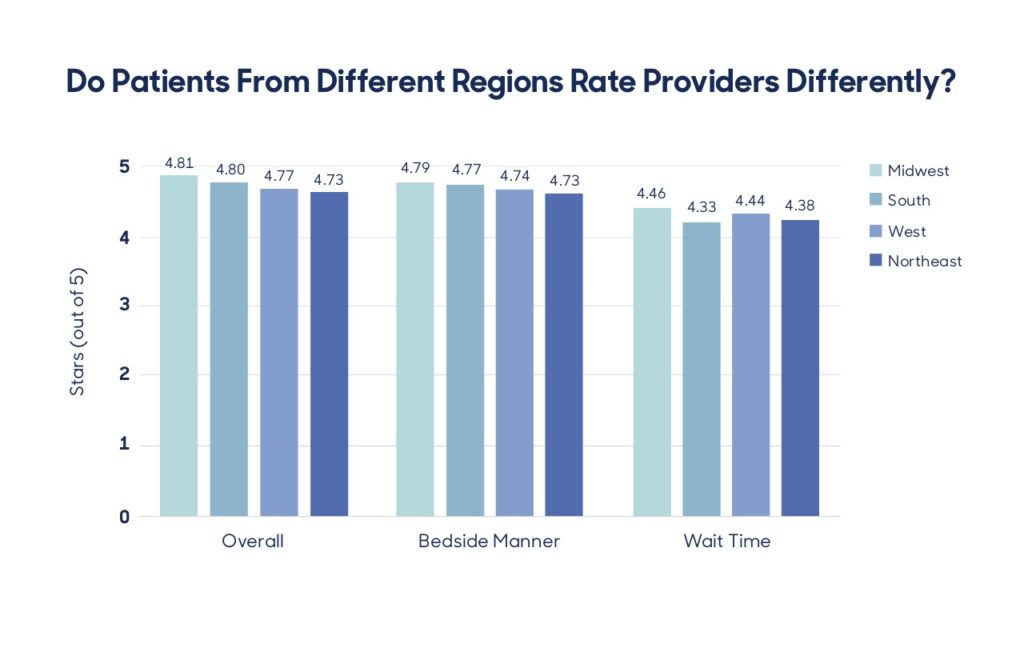For many years, online reviews have been an important resource for digital consumers. While these reviews mainly originated for things like restaurant recommendations and eCommerce purchases, sites now aggregate ratings of everything from churches to colleges and even hospitals. Given the powerful effects online reviews can have on the health of a business, healthcare providers are thinking of ways they can increase their number of positive reviews and leverage them to grow their practices.
While providers requesting online reviews directly from patients is not considered best practice, Zocdoc asks patients for feedback on the provider’s behalf after every single appointment booked through the platform. This system results in a higher volume of reviews and means not just the extremely happy or unhappy outliers are taking the time to leave one. It also ensures doctors have a ton of useful patient feedback (good, bad, and indifferent) to understand how patients form impressions of their health care services.
But even though doctors on Zocdoc generate of a plethora of patient reviews, it can still be difficult to analyze this information and pull out insights to improve their practices. To help, we looked into our database of reviews to surface factors that matter most in positive and negative ratings, so you can be sure you’re doing everything you can to secure a high online rating and improve your patient retention rate.
Overall, we found that patients who had positive experiences with their providers frequently use attributive adjectives like “friendly” and “thorough” in their review comments, while patients who rate their providers poorly often refer to “waiting” and “insurance.” We also saw that some patient demographics generally tend to rate their providers higher than others: men, for example, tend to report a more positive experience than women. Older patients, as well as those who live in rural areas and Midwest and Southern regions also tend to report more positive experiences than their counterparts. Continue reading for a breakdown of these insights below.
Bedside manner motivates positive reviews, appointment delays motivate negative reviews
First, we wanted to answer the most fundamental question: what motivates positive and negative reviews? To do this, we examined the comments that accompany positive reviews (defined as those netting an overall rating of four or five out of five stars) and negative reviews (those netting one or two stars). The table below ranks the 50 words that appear most often in positive and negative reviews, after omitting words like “to” and “the.”

We found that attributive adjectives (words like “friendly,” “thorough” and “excellent”) accounted for nearly half (22/50) of the most common words in comments for positive reviews. When viewed in context of the rest of the comment, we found that these words were used to not only describe providers, but office staff as well.
On the other hand, attributive adjectives appeared less often in negative reviews, accounting for only 6 of the 50 most common words. The most common negative attributes mentioned were “rude” and “unprofessional.”
Comments accompanying negative reviews, were more likely to describe issues related appointment timing, using words like “scheduled,” “arrived,” “waited,” “hours,” and “weeks”), office and support staff (“receptionist” and “assistant”), or systems related to medical care (“insurance,” “lab,” and “tests”) in their reviews.
Taken together, this suggests that doctors with good bedside manner will earn positive reviews, but that logistical snafus, such as scheduling difficulties, long waits, or problems coordinating with insurance, can still risk turning a patient away from a provider.
Men tend to give higher reviews than women
While this initial analysis helped us understand how bedside manner and office operations impact the patient experience, we also wanted to know if characteristics of the patients themselves might influence their reviews. Do certain demographics tend to review their providers differently? We started by asking how provider ratings are influenced by the patient’s gender.

Our data showed that while the average patient tends to rate their provider highly, men are more generous than women across the board. For all three categories (overall, bedside manner and wait time), males rate their providers more favorably than females. Male and female patients alike were generally more dissatisfied with wait times than with the bedside manner they received.
Bedside manner and overall ratings improve as patients age
Another patient characteristic we thought might influence reviews is age. Are younger patients more forgiving – or more critical – than older ones? To find out, we divided our data into groups based on patient age, calculated average provider ratings, and charted our results below.

Overall perception and bedside manner ratings tend to improve as patients age. An exception to this trend is a dip in average rating during the 20s. While it could be that patients in their 20s temporarily become less generous in their ratings, it’s more likely that the comparatively higher rankings for the under 19 crowd reflect those patients’ parents’ more generous perspectives (Zocdoc allows users to book on behalf of other patients, such as children).
Ratings of wait time, on the other hand, follow a different trend than the steady increase seen for overall rating and bedside manner: young and old patients have less tolerance for long wait times than do middle-aged patients.
The chart also shows that a patient’s overall perception of their care is better correlated with the rating of bedside manner than wait time. In other words, a patient’s impression of the quality of their care is influenced more by how they felt interacting with their provider than how long they had to wait to see him or her.
Highest reviews come from Midwest and Southern regions
Next, we wondered whether patients’ locations – and therefore the cultures they’re immersed in – might influence their perceptions of healthcare providers. To answer this, we used provider zip codes to identify the patient region of residence and calculated average ratings for each of the four major regions of the U.S. as defined by the Census Bureau: the Midwest, Northeast, South, and West.

While average ratings are generally similar across regions, the highest reviews reliably come from regions known for kindness and hospitality – the Midwest and the South – and the lowest come from the Northeast.
This pattern holds for overall rating and bedside manner, but breaks when patients considered wait time. Southerners may be generous with their overall impressions of care, but have the least patience for long wait times.
So how can healthcare providers ensure positive patient experiences? We saw that patients review providers positively when they project warmth, knowledgeability and empathy. On the other hand, negative reviews are more likely to be triggered by long wait times and battles with insurance, so consider implementing solutions that will help your office operations run smoothly. Fortunately for providers, bedside manner influences overall patient perception to a greater degree than does wait time.
That said, bear in mind that different groups of patients are likely to review providers somewhat differently. Women and young adults are more likely to rate their providers critically than are men and older patients. And providers in the Midwest may find themselves with more generous patients than those in the Northeast environments.
